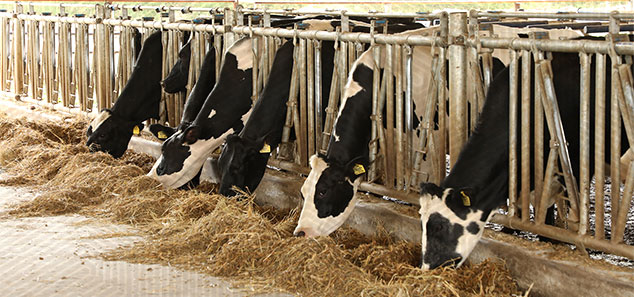Want to run a dairy farm? This is what it will cost you
As a major activity in the livestock sector, dairy farming is a thriving business venture albeit a capital intensive one.

Dairy farming is one of the largest contributors to food and nutrition security and a source of livelihood in Kenya. According to the KNBS Economic Survey 2020, dairy farming gave a boost to the agricultural sector through improved performance. The quantity of milk delivered to processors increased by 5.3 per cent from 634.3 million litres in 2018 to 668.2 million litres in 2019.
As a major activity in the livestock sector, dairy farming is a thriving business venture albeit a capital intensive one. From the cows and calves, to land, fodder, labour and machinery needed to operate the farm, it’s a huge investment.
So what do you need to know before you get into this business, and how much does it cost?
Fodder comes first, not cows
David Maina, an expert consultant in dairy investments and Head of Business-Dairy Production Investments at Perfometer, a dairy advisory company, says if well managed, dairy farming is economically viable.
For beginners who wish to venture into dairy farming, David says the first thing to consider is the feed for the animals.
“Lack of know-how has led to the collapse of dairy farms. The common mistake I see people make is that they begin with building a cow shed, they bring in the cows and then begin to think about where the feed is going to come from. That is wrong. You should begin with fodder, then structures, buy equipment, get workers then the cows can come to a farm that is already set up,” he says.
The second thing to consider is the vision for the dairy farm; who will run the farm and how interested is your family in the business?
David says for a long-term vision, in most cases, the farm may outlive the person who started it and will require a succession plan. But if nobody is interested in the business then it can be done short-term because no one will be available to take care of it.
Cost of dairy cows
In Kenya, the most popular dairy breed is Friesian, but Ayrshire, Jersey and even Boran are also common breeds.
For dairy farming, the most recommended stage to buy a cow is when it is a calf. Good quality or top tier Friesian cows are pricy and can go up to KSh. 400,000 per heifer, David says. However, this is if the farm the calf is coming from has impeccable documentation, a good reputation and the mothers have a high milk production.
“The top range breeds we have in Kenya cost between KSh. 330,000 and KSh. 350,000. In most cases, these are cows that were imported as calves, or imported directly as pregnant heifers from Europe, South Africa or from other dairy developed economies,” says David.
Second tier dairy cows cost between KSh. 180,000 and KSh250,000. These are cows bought from farmers whose cattle look good in terms of size, they did not show signs of stunted growth, but lack proper documentation and the parentage cannot be confirmed.
However, there are farmers who sell good Friesian cows below KSh.180,000 and the dairy investment consultant says in most cases, it is because they have a cash flow problem which they need to solve.
Third tier heifers are those sold among small scale farmers and go from as low as KSh. 90,000 to KSh. 120,000.
Heifers in all the tiers are sold while pregnant.
Capital estimation
Some of the major components included in the capital estimation of a dairy farm are: the cow shed, feeds, milking parlor, farm machinery and equipment, and workers.
Depending on which materials will be used for construction of the cow shed -wood or metal or a combination of both – the cost will vary.
“The cow shed can be a mix of both wood and metal or just wood which brings the cost significantly down. But perhaps the lowest you can get to is about KSh. 40,000 per cow space. But we have barns that have gone up to about KSh. 200,000 per cow space,” David says.
He continues: “When I say per cow space, I mean the total cost of the barn divided by the number of cows it was designed to hold. So, if I was designing a barn for 100 cows and it has cost me KSh. 2 million then you divide KSh2 million by 100 animals,”
Cow feeds also form a major part of the capital whether grown by the farmer or bought.
Workers and equipment are also part of the estimate, with machinery like milking machines costing about KSh50,000 for a single electric milking machine.
“A milking parlour, for example a semi-automatic one, could cost up to KSh. 6 million. It’s not cheap.
“Then you also have to factor in things like power and a backup generator, freezers, coolers, pasteurizer and so on. All the costs must be foreseen so that you don’t have to start thinking about them when you have already begun your dairy farm operation,” David says.
Pests and disease control
Dairy cows are affected by a range of diseases which may compromise their productivity and profitability.
Samson Muthoni, farm manager at Risa Farm, says it is important to have a protocol for how to treat diseases.
“It’s important to know when the disease got noticed. There are diseases that we need to take samples to a lab in order to analyze the sensitivity of certain medicines. So, from there, that’s when we embark on treatment. The cost can be quite high for some diseases, but generally treatment is relatively affordable,” Samson says.
